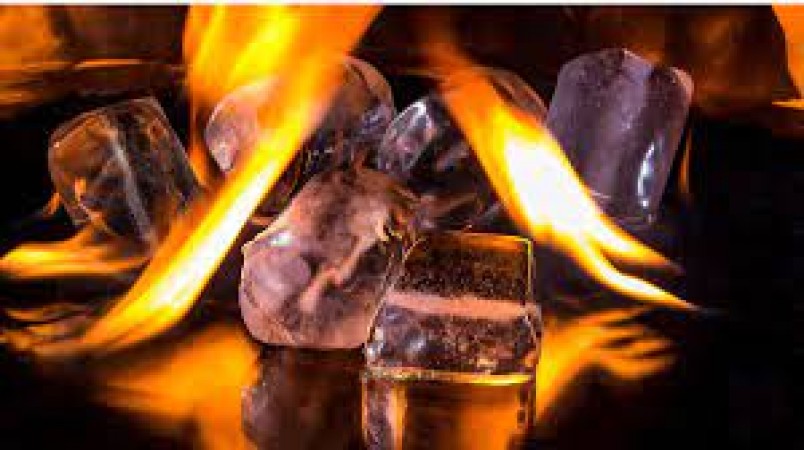
Fire and ice are usually considered opposites, but there's a fascinating phenomenon where ice can indeed lead to fire. This seemingly paradoxical occurrence has intrigued scientists and sparked curiosity among many. Let's delve into the details to understand how this miraculous event happens.
The ice-fire effect refers to the phenomenon where certain materials, when in contact with ice, can generate heat significant enough to ignite or cause combustion. It's a captivating demonstration of the complex interactions between different substances and their environments.
Several factors contribute to the ice-fire effect, including the properties of the materials involved and the principles of thermodynamics. Understanding these components is crucial to unraveling the mystery behind this phenomenon.
At the core of the ice-fire effect are chemical reactions that occur when specific substances interact with ice. These reactions often involve exothermic processes, where heat is released as a byproduct of the reaction. The release of heat can be substantial under the right conditions, leading to a noticeable increase in temperature.
Interestingly, the process can also involve endothermic reactions, which absorb heat from the surroundings, leading to a decrease in temperature. However, this drop in temperature can trigger subsequent reactions that produce heat, eventually leading to ignition. It's a complex interplay of energy exchange that can result in surprising outcomes.
Catalysts play a crucial role in facilitating the reaction between the material and ice, enhancing the process and making it more efficient. By lowering the activation energy required for the reaction to occur, catalysts enable the transformation of substances at lower temperatures, potentially leading to the ice-fire effect.
In laboratory settings, scientists conduct demonstrations to showcase the ice-fire effect using various materials and catalysts. These demonstrations not only illustrate the phenomenon but also provide valuable insights into the underlying mechanisms at play. By carefully controlling experimental conditions, researchers can study the ice-fire effect in detail and uncover its secrets.
While the ice-fire effect is primarily a scientific curiosity, it has potential practical applications. For instance, it could be used in emergency situations where rapid heat generation is necessary. By harnessing the power of chemical reactions triggered by ice, it might be possible to develop novel heating devices or emergency fire-starting mechanisms.
The type of material involved and its chemical properties significantly influence whether the ice-fire effect occurs. Certain substances are more prone to react with ice and produce heat, while others may remain inert under similar conditions. Understanding the chemical composition of materials is essential for predicting their behavior in ice-fire experiments.
Environmental factors such as temperature and pressure can impact the likelihood and intensity of the ice-fire effect. Changes in temperature can alter the rate of chemical reactions and influence the overall outcome of experiments. By controlling these variables, scientists can manipulate the ice-fire effect and study its behavior under different conditions.
Given the potential for combustion, it's essential to exercise caution when conducting experiments related to the ice-fire effect. Safety measures such as wearing protective gear and using appropriate containment systems can minimize the risk of accidents and injuries. By following established protocols, researchers can ensure the safety of both themselves and others in the vicinity.
Proper safety measures, including the use of protective gear and conducting experiments in controlled environments, can mitigate risks associated with the phenomenon. By identifying potential hazards and implementing preventive measures, researchers can minimize the likelihood of accidents and ensure the integrity of their experiments. Safety should always be a top priority when working with potentially hazardous materials or processes.
Continued research into the underlying mechanisms of the ice-fire effect could yield valuable insights into both fundamental science and potential applications. By delving deeper into the chemistry and physics behind the phenomenon, scientists can expand our understanding of how materials interact with ice and other environmental factors. This knowledge could pave the way for new discoveries and innovations in various fields.
Discoveries related to the ice-fire effect may inspire the development of new technologies and materials with enhanced capabilities. From more efficient heating systems to novel fire-starting devices, the potential applications of this phenomenon are vast. By leveraging our understanding of the ice-fire effect, researchers can explore innovative solutions to pressing challenges and contribute to the advancement of science and technology.
The ice-fire effect exemplifies the intricate interplay between chemistry, physics, and thermodynamics. While seemingly improbable, this phenomenon highlights the richness and complexity of the natural world. By unraveling its mysteries, scientists may unlock new possibilities and applications that could benefit society. From fundamental research to practical innovations, the study of the ice-fire effect offers boundless opportunities for exploration and discovery.
Poultry Farming: If you are rearing poultry then pay special attention to these things
Tech Giants Unite Against AI-Generated Election Meddling
ISRO's YUVIKA Program 2024: Enrollment Opens for Class 9 Students; How to Sign Up and More Details